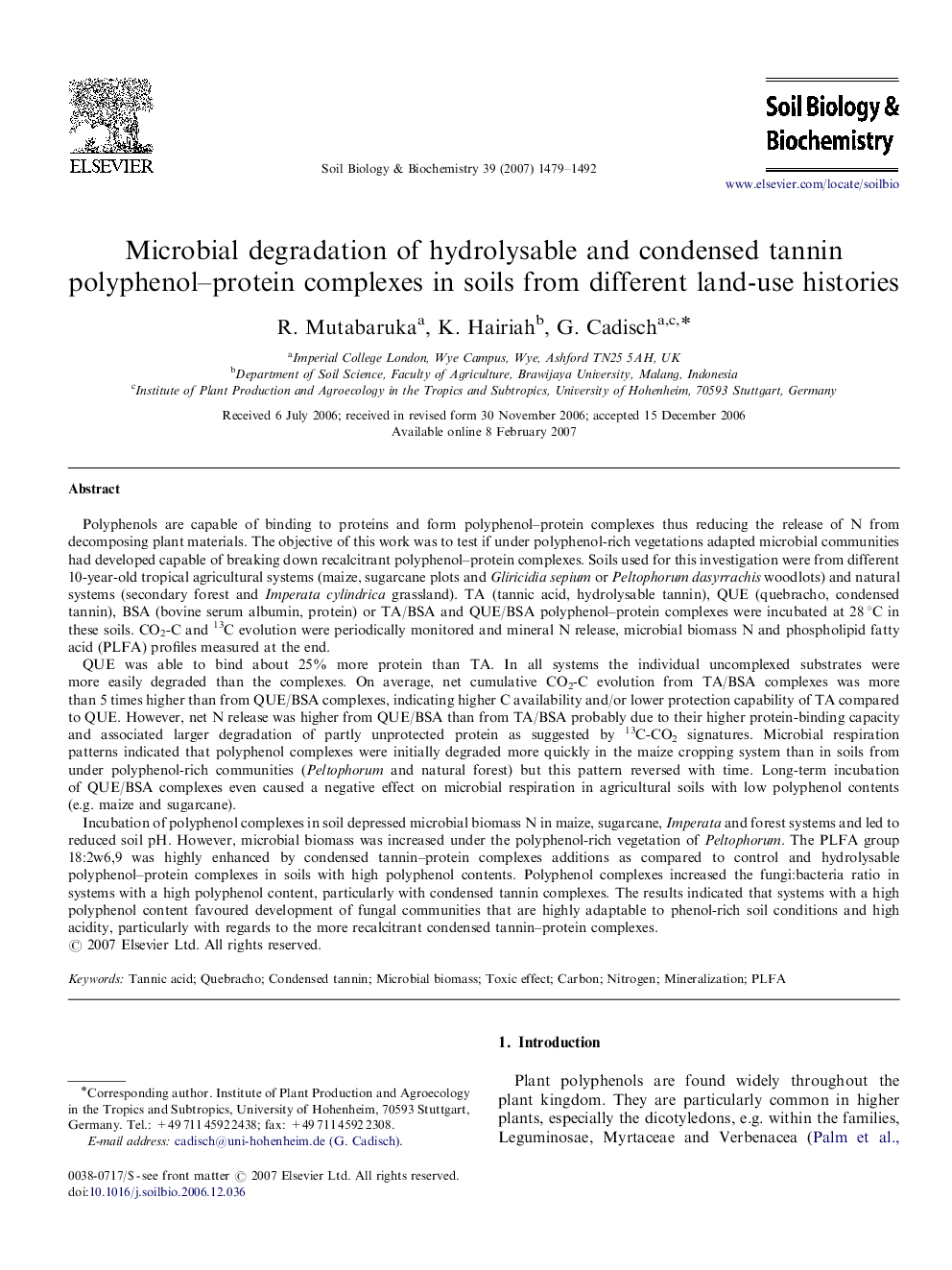| کد مقاله | کد نشریه | سال انتشار | مقاله انگلیسی | نسخه تمام متن |
|---|---|---|---|---|
| 2026213 | 1070023 | 2007 | 14 صفحه PDF | دانلود رایگان |

Polyphenols are capable of binding to proteins and form polyphenol–protein complexes thus reducing the release of N from decomposing plant materials. The objective of this work was to test if under polyphenol-rich vegetations adapted microbial communities had developed capable of breaking down recalcitrant polyphenol–protein complexes. Soils used for this investigation were from different 10-year-old tropical agricultural systems (maize, sugarcane plots and Gliricidia sepium or Peltophorum dasyrrachis woodlots) and natural systems (secondary forest and Imperata cylindrica grassland). TA (tannic acid, hydrolysable tannin), QUE (quebracho, condensed tannin), BSA (bovine serum albumin, protein) or TA/BSA and QUE/BSA polyphenol–protein complexes were incubated at 28 °C in these soils. CO2-C and 13C evolution were periodically monitored and mineral N release, microbial biomass N and phospholipid fatty acid (PLFA) profiles measured at the end.QUE was able to bind about 25% more protein than TA. In all systems the individual uncomplexed substrates were more easily degraded than the complexes. On average, net cumulative CO2-C evolution from TA/BSA complexes was more than 5 times higher than from QUE/BSA complexes, indicating higher C availability and/or lower protection capability of TA compared to QUE. However, net N release was higher from QUE/BSA than from TA/BSA probably due to their higher protein-binding capacity and associated larger degradation of partly unprotected protein as suggested by 13C-CO2 signatures. Microbial respiration patterns indicated that polyphenol complexes were initially degraded more quickly in the maize cropping system than in soils from under polyphenol-rich communities (Peltophorum and natural forest) but this pattern reversed with time. Long-term incubation of QUE/BSA complexes even caused a negative effect on microbial respiration in agricultural soils with low polyphenol contents (e.g. maize and sugarcane).Incubation of polyphenol complexes in soil depressed microbial biomass N in maize, sugarcane, Imperata and forest systems and led to reduced soil pH. However, microbial biomass was increased under the polyphenol-rich vegetation of Peltophorum. The PLFA group 18:2w6,9 was highly enhanced by condensed tannin–protein complexes additions as compared to control and hydrolysable polyphenol–protein complexes in soils with high polyphenol contents. Polyphenol complexes increased the fungi:bacteria ratio in systems with a high polyphenol content, particularly with condensed tannin complexes. The results indicated that systems with a high polyphenol content favoured development of fungal communities that are highly adaptable to phenol-rich soil conditions and high acidity, particularly with regards to the more recalcitrant condensed tannin–protein complexes.
Journal: Soil Biology and Biochemistry - Volume 39, Issue 7, July 2007, Pages 1479–1492